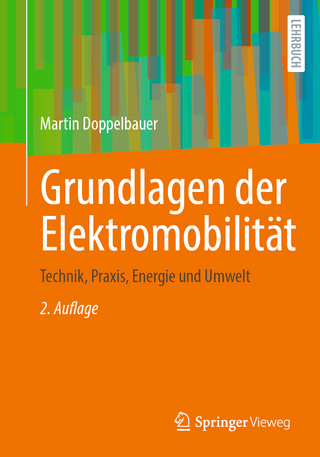
The Holocene
Wiley-Blackwell (Verlag)
978-1-4051-5521-2 (ISBN)
The Holocene provides students, researchers and lay-readers with the remarkable story of how the natural world has been transformed since the end of the last Ice Age around 15,000 years ago. This period has witnessed a shift from environmental changes determined by natural forces to those dominated by human actions, including those of climate and greenhouse gases. Understanding the environmental changes - both natural and anthropogenic - that have occurred during the Holocene is of crucial importance if we are to achieve a sustainable environmental future.
Revised and updated to take full account of the most recent advances, the third edition of this classic text includes substantial material on the scientific methods that are used to reconstruct and date past environments, as well as new concepts such as the Anthropocene. The book is fully-illustrated, global in coverage, and contains case studies, a glossary and more than 500 new references.
Neil Roberts is Professor of Geography at Plymouth University in the UK and has been Visiting Senior Researcher at Stanford University, CA. His main research interests are in Holocene environmental change, especially lake sediment records of climate and human impact in Mediterranean regions. He is a fellow of the Royal Geographical Society, and served on the US National Academies Committee on climate changes of the last 2,000 Years.
Technical boxes viii Preface to the third edition ix
Acknowledgements xi
About the companion website xii
1 Introduction 1
Sources of information on past environments 2
Nature and society 5
The significance of the Holocene 6
References 7
2 Reconstructing Holocene environments 10
Dating the past 10
Historical and archaeological dating 11
Radiometric dating methods 13
Dendrochronology and radiocarbon calibration 19
Other dating methods 25
Conclusion 28
Palaeoecological techniques 32
Pollen analysis 33
Plant remains 40
Creatures great and small 44
Freshwater and marine organisms 46
Geological techniques 47
Ice and ocean 51
Stable isotope analysis 53
Geomorphology and climate 55
Geo-archaeology 59
Modelling the past 61
Models of environmental reconstruction 61
Computer model simulations 64
Conclusion 66
References 66
3 The Pleistocene prelude (>11 700 Cal. yr bp) 83
Ice Age environments 83
The glacial–interglacial cycle 83
Understanding the causes of long-term climatic change 88
The Last Glacial Maximum and after 92
The terminal Pleistocene (15 000–11 700 Cal. yr bp) 96
The Late Glacial in the North Atlantic region 96
Terminal Pleistocene climatic oscillation: a globally synchronous event? 102
Adjustment of geomorphic systems 105
Human ecology at the end of the Pleistocene 107
Megafaunal extinctions 110
References 115
4 Early Holocene adaptations (11 700–6000 Cal. yr bp) 128
Changes in the physical environment 128
Ice sheets and sea levels 128
Human adaptations to coastal environments 131
Lake ontogeny and soil development 135
The return of the forests 140
Europe 140
Eastern North America 142
Dry Mediterranean woodland 144
Tropical forests 145
Factors affecting forest re-advance 146
The ecology of Mesolithic Europe 151
The early Holocene in the tropics 154
Saharan palaeoecology 155
Early Holocene climates: Pattern and process 158
Conclusion 165
References 167
5 The first farmers 178
Agricultural origins 178
Southwest Asia 179
China and South Asia 184
Mesoamerica 186
Tropical domesticates 190
Independent innovation or diffusion? 193
The role of environmental change in early agriculture 194
Early agricultural impacts 199
European agricultural dispersals 201
Ecological consequences of early European agriculture 204
Conclusion 207
References 208
6 The taming of nature (6000–1000 Cal. yr bp) 217
Introduction 217
Changes in the natural environment 219
Climate and vegetation 219
The origin and development of blanket mires 228
Coasts and rivers 232
Cultural evolution 235
Hydraulic civilisation in Mesopotamia 236
Environmental impact in pre-Hispanic Mesoamerica 239
Pastoral nomadism 241
Mediterranean ecosystems 242
The making of the landscape: The British Isles 249
The primaeval forest 250
Shaugh Moor – a Bronze Age landscape 254
The environmental impact of permanent agricultural clearance 256
Conclusion 261
References 262
7 The impact of modern times (1000–0 Cal. yr bp) 277
Introduction 277
Climatic changes in historical times 280
Climate history and global warming 282
Consequences of medieval and Little Ice Age climate change 288
Expansion at the periphery 291
Conquest of the Northlands 291
The Pacific 295
Ecological imperialism 300
Land-use history and soil erosion 303
Pollution histories 312
Eutrophication: natural or cultural? 312
Acidification and atmospheric pollution 318
References 323
8 The environmental future: A Holocene perspective 336
Holocene environmental crises 340
Environmental conservation and Holocene Environmental history 343
References 347
Appendix: Calibration table for radiocarbon ages 352
Glossary 353
Index 358
| Erscheint lt. Verlag | 31.1.2014 |
|---|---|
| Verlagsort | Hoboken |
| Sprache | englisch |
| Maße | 170 x 241 mm |
| Gewicht | 726 g |
| Themenwelt | Naturwissenschaften ► Biologie ► Ökologie / Naturschutz |
| Naturwissenschaften ► Geowissenschaften ► Geologie | |
| Naturwissenschaften ► Geowissenschaften ► Meteorologie / Klimatologie | |
| Naturwissenschaften ► Geowissenschaften ► Mineralogie / Paläontologie | |
| ISBN-10 | 1-4051-5521-3 / 1405155213 |
| ISBN-13 | 978-1-4051-5521-2 / 9781405155212 |
| Zustand | Neuware |
| Informationen gemäß Produktsicherheitsverordnung (GPSR) | |
| Haben Sie eine Frage zum Produkt? |
aus dem Bereich


